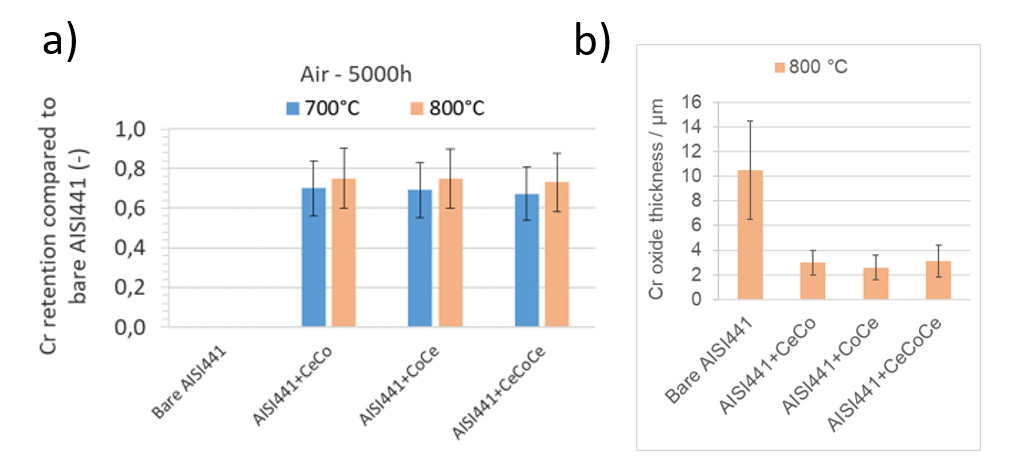One of the things that makes SOEC/SOFC systems so promising is that they can respond to energy-transition needs like storage for renewably-generated electricity, industrial process waste heat recovery, and coupling with nuclear reactors. Currently, these systems' main drawback is the durability of components subjected to extreme operating temperatures (650 °C to 800 °C). To be commercially viable, systems will have to offer service lives in the tens of thousands of hours. And they are not there yet.
In research to support CEA hydrogen spinoff Genvia, CEA-Liten and CEA-ISAS investigated the aging of interconnects, one of the components that make up the SOEC/SOFC stack. Interconnects are made from a ferritic stainless steel, which, despite its many advantages, presents two challenges detrimental to system performance. First, the material oxidizes, forming a layer of chromium-rich oxide that hinders conduction. Second, in the oxidation-prone SOEC/SOFC environment, the chromium volatilizes and builds up on the oxygen electrode.
In this research, a cerium oxide and cobalt metal coating was applied to the interconnects by physical vapor deposition (PVD), a technique compatible with industrial manufacturing processes. The coating's ability to limit degradation was assessed during long (around 5,000 hours) tests by measuring two key parameters: the oxidation rate, which affects the thickness of the oxide formed, and the chromium volatilization mentioned above. Additional long tests on a 1:1 stack were also completed and post-mortem analyses carried out to compare the coated and uncoated interconnects. At the sample level, the initial results, which have not yet been confirmed at stack level, indicate that the coating is effective at limiting interconnect aging.

Figure 1 - a) Cr retention of different CeCo-based coatings in reference to bare steel after 5 000 h at 700 and 800 °C in air.
Figure 1 - b) Average thicknesses of Cr oxide layer on bare steel and coated samples tested for 5 000 h in air at 800 °C.

Figure 2 - SEM images and elemental EDX profiles of (a) bare steel and (b) CeCo-coated steel after 5 000 h in air at 800 °C. Nickel comes from a coating deposited on top of the sample during SEM preparation.
Additional testing has already begun. The goal is to round out the earlier tests with new
in operando resistivity measurements to gain new insights into the initial results. Further down the line, accelerated aging tests that replicate the targeted service life of tens of thousands of hours will be vital to assessing the long-term durability of the coating. Alternative coatings that are less dependent on critical metals than the one studied here could also be investigated, opening up new pathways to enhanced SOEC/SOFC performance and durability.